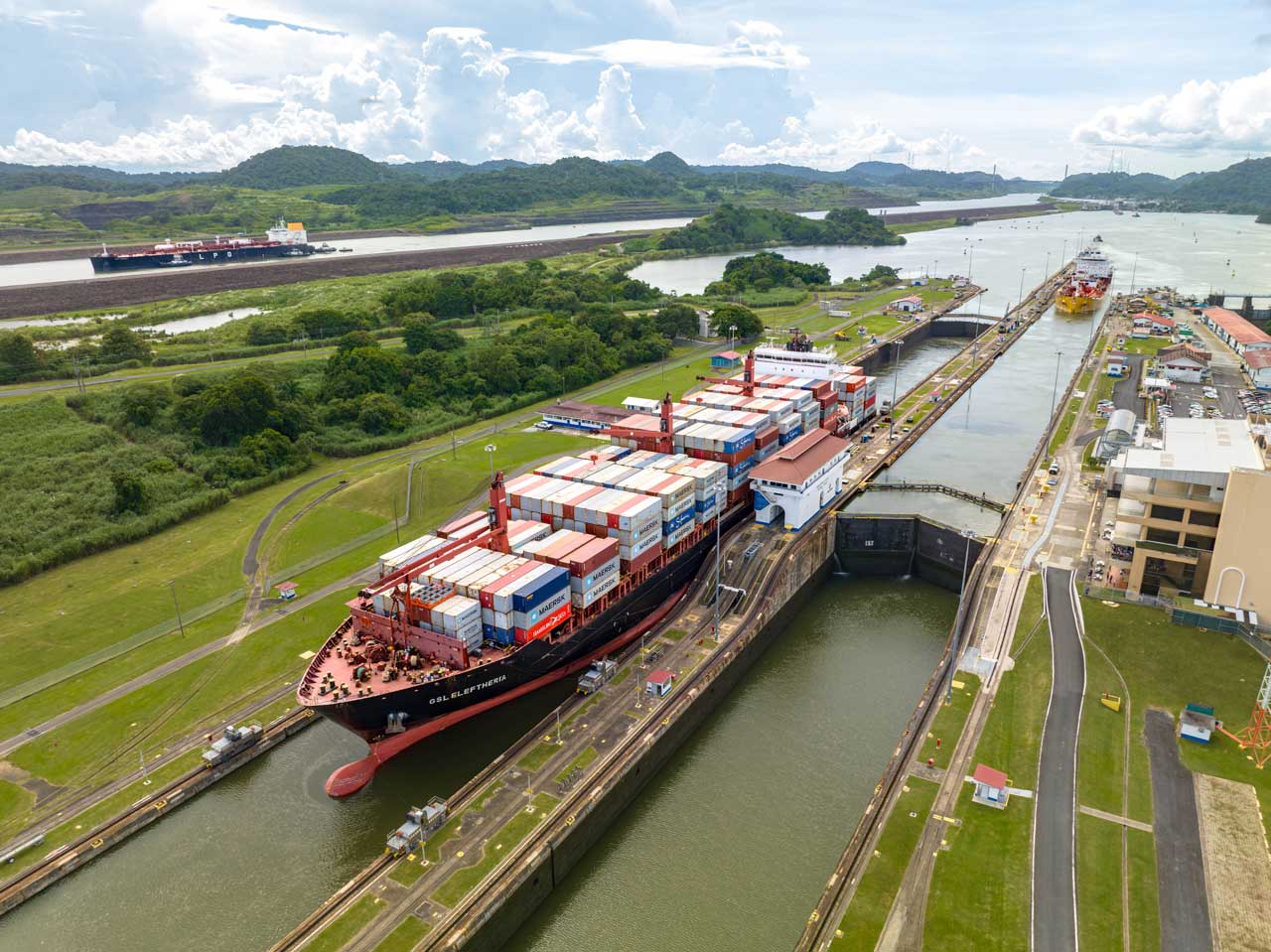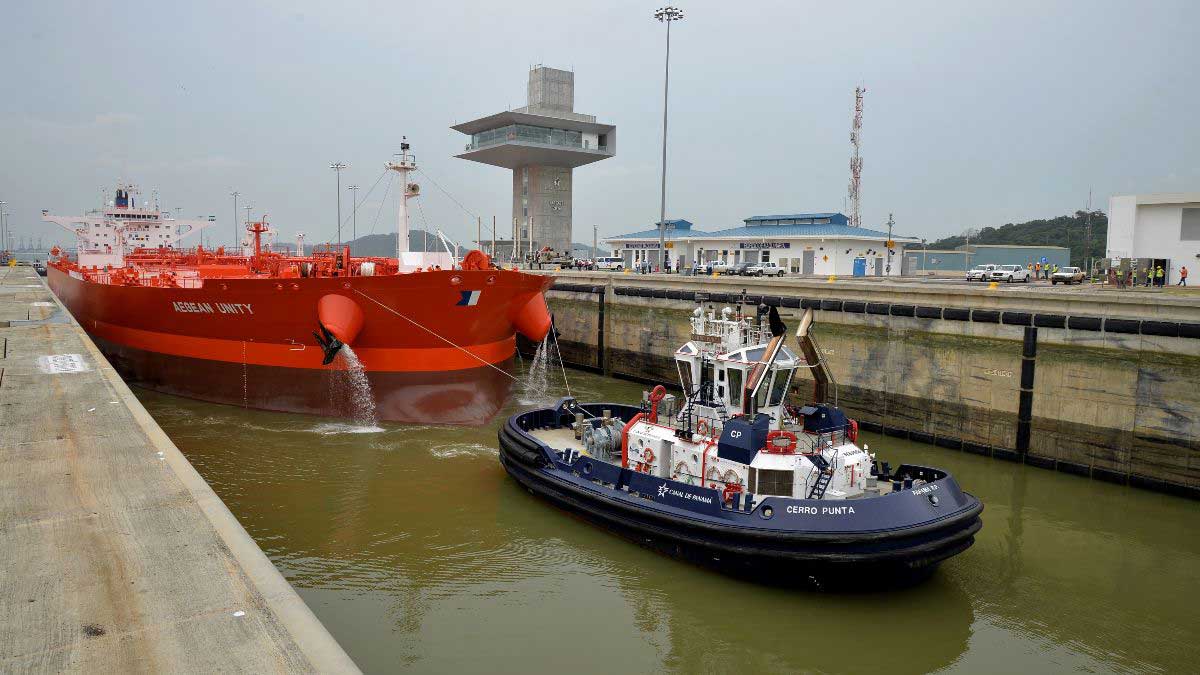- Operated by Norwegian Cruise Lines, the transiting Norwegian Bliss weighs more than 168,000 gross tons and can carry nearly 5,000 passengers
Panama City, Panama, May 14, 2018 – The Panama Canal today welcomed the Norwegian Bliss, the largest passenger vessel to ever transit the waterway.
“The Panama Canal is proud to welcome the Norwegian Bliss and recognizes that this distinct milestone is made possible by the Canal Expansion, as well as the experience and efforts gained in the two years since its inauguration,” said Deputy Canal Administrator Manuel Benítez.
The Norwegian Bliss left Germany’s Meyer Werft shipyard in March to begin a 15-day itinerary this month, sailing from Miami, Florida through the Panama Canal and up along the west coast of Central and North America before reaching its final destination at the Port of Los Angeles in California. The ship will then service the Alaska region until the end of the cruise season, after which it will be repositioned in the Caribbean.
“We are very proud to help the Panama Canal close out the season with the crossing of our highly-anticipated ship, Norwegian Bliss,” said Andy Stuart, president and chief executive officer of Norwegian Cruise Line. “As she makes her way to Seattle, we are excited for this sixteenth ship in our young and modern fleet to begin welcoming guests and providing them with the stand-out service, dining, entertainment and amenities for which we are recognized.”
For the Panama Canal, May 24 marks the unofficial end to the 2017-18 cruise season when it will transit the Pacific Princess, operated by Princess Cruises, as part of a 17-day voyage from Los Angeles, California to its final destination at the port of Fort Lauderdale.
The Canal’s international trade specialist Albano Aguilar commented on the waterway’s successful season. “By the end of its cruise season, the Panama Canal will have transited a total 248 passenger ships with a total of 312,304 passengers onboard,” explained Aguilar. “Of this, a total of 20 cruises will be Neopanamax vessels, including the Caribbean Princess, Carnival Freedom, Carnival Splendor, Norwegian Bliss and Disney Wonder – all able to transit the waterway thanks to the Expansion of the Canal.”
Smaller ships such as the Safari Voyager and the Wind Star also contributed to total transits. These vessels, with itineraries of eight and 11 days, respectively, visited ports located on the west coast of the Central American isthmus. Additionally, the Panama Canal received passenger ships that were not expected to transit, such as Le Boreal and Logos Hope.
Through the end of the season, renowned cruise lines such as Princess Cruises, Holland America Line, Royal Caribbean Cruises and Norwegian Cruise Line, among others, will continue offering itineraries for complete and partial transits, the last of which include Panama City and the interoceanic route, in particular, as destinations.
About the Panama Canal Authority
The Panama Canal is run by an autonomous agency of the Government of Panama in charge of managing, operating and maintaining the Panama Canal. The operation of the Panama Canal Authority (ACP) is based on its organic law and the regulations approved by its Board of Directors. For more information, please refer to the ACP’s website: http://www.pancanal.com or follow us on Twitter @thepanamacanal .
About the Panama Canal Expansion
The Panama Canal Expansion is the largest enhancement project since the Canal’s opening in 1914. Considered and analyzed for a decade with more than 100 studies, the Expanded Canal provides the world’s shippers, retailers, manufacturers and consumers with greater shipping options, better maritime service, enhanced logistics and supply-chain reliability. The Expansion included the construction of a new set of locks on the Atlantic and Pacific sides of the waterway, creating a third lane of traffic and doubling the cargo capacity of the waterway. While the expanded locks are 70 feet wider and 18 feet deeper than those in the original Canal, they use less water due to water-savings basins that recycle 60 percent of the water used per transit. In line with its commitment to customer service, the Panama Canal will continue to provide the world with value for another century and beyond.




